Sports
/ArcaMax
Best times for anglers
(Table for Aug. 17-Aug. 31)
This table lists top fishing times and days for the coming weeks. For best results, begin fishing one hour before and continue one hour after the times given. Times apply to all time zones.
———
Sunday………...........6:40 a.m.........………..................................................7:10 p.m.
...Read more
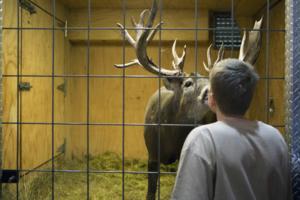
Minnesota deer farmers lose for the second time in their attempt to nullify new regulations
MINNEAPOLIS — Minnesota deer farmers have been denied a second time in their fight to stop a 2023 state law that will bring an end to their industry in Minnesota after another generation.
The Eighth Circuit Court of Appeals upheld a lower court’s dismissal of the group’s lawsuit, rejecting their argument that they have the right to pursue...Read more
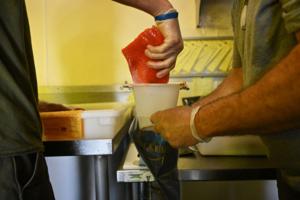
King salmon's disappearance has changed Alaska's Kenai River, but a soaring sockeye run is keeping it in business
SOLDOTNA, Alaska — A trio of anglers leaned on the edge of Jordan Carter's boat in shallow water on the Kenai River last month, victoriously enjoying a cold beverage.
Their ride with Carter, a local fishing guide, was brief but bountiful. The group pulled in 18 sockeye salmon in a flash, easily reaching their limit with time left to enjoy the...Read more
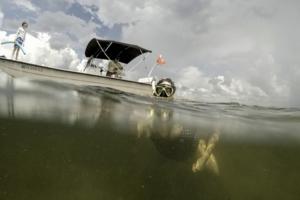
Unsafe toxins halt Florida's popular Pasco scallop season for 2nd year in a row
TAMPA, Fla. — For the second summer in a row, Florida wildlife officials said they are suspending the popular scallop harvest along all state waters in Pasco County over worries of unsafe toxins from harmful algal blooms.
Water samplers have detected potentially harmful levels of an algal bloom called Pyrodinium bahamense and the toxins it ...Read more
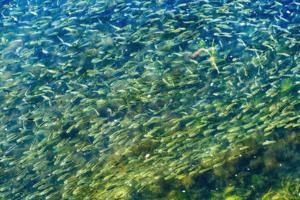
Recreational fishing leaders call on Trump for stricter regulations on forage fishing
NORFOLK, Va. — Recreational fishing industry leaders are calling on President Trump to limit industrial fishing of forage fish, such as menhaden.
Forage fish, also called bait fish, serve as food for other species. In recent years, oversight of the menhaden reduction fishery in Virginia has been debated through regulation requests and ongoing...Read more
Best times for anglers
(Table for Aug. 10-Aug. 24)
This table lists top fishing times and days for the coming weeks. For best results, begin fishing one hour before and continue one hour after the times given. Times apply to all time zones.
———
Sunday………..........12:45 a.m.....…………………............................................1:10 p.m.
...Read more
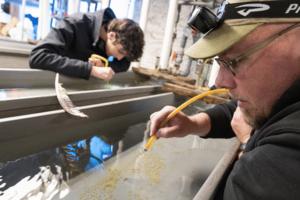
Minnesota's 'Queen of Walleye' raises millions of fish in a DNR basement
MINNEAPOLIS — Genevieve Furtner took a glob of hundreds of fish eggs from a jar, placed it on top of a mesh screen and pushed a few clear, yellow eggs through it and into a pail of water.
Live muskie eggs have to be separated from the gray, dead ones taken over by fungi or they would die too.
With only an old fan to move the humid air, ...Read more
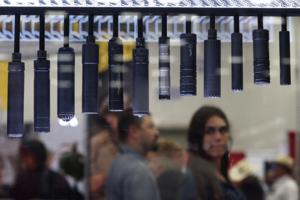
Dennis Anderson: Gun suppressors or gun silencers? Either way, the Big Beautiful Bill shoots down a $200 tax.
MINNEAPOLIS — There’s a scene in the movie “John Wick: Chapter 2,” in which no one else notices the shootout between the movie’s star, Keanu Reeves, and another dude because their pistols are equipped with “silencers.”
Memo to the Writers Guild of America: There are no gun silencers. Only gun suppressors.
Suppressors don’t make...Read more
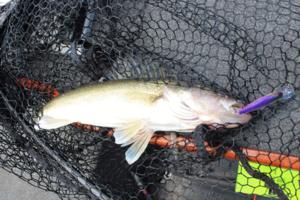
Slow-biting walleyes mean anglers can keep more on Mille Lacs
MINNEAPOLIS — Anglers on Mille Lacs Lake will be able to keep an extra walleye soon.
The daily limit will increase from two to three of the fish, after a slow bite this summer has meant fewer fish have been harvested from central Minnesota’s premier walleye lake.
Only about 22% of the state’s annual Mille Lacs walleye quota had been met ...Read more
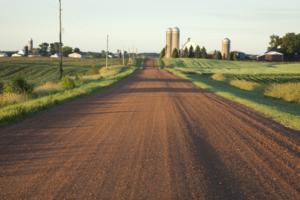
Dennis Anderson: Stop mowing roadsides and hurting our wildlife
MINNEAPOLIS — Todd Finkelson suffers from road rage, though not the kind that typically makes headlines.
Every day, when he drives from his home near Ashby in west-central Minnesota to Fergus Falls, where he works, he keeps a sharp eye on the road — and an even sharper eye on roadsides.
“In that short distance, I can count at least 10 ...Read more
Best times for anglers
(Table for Aug. 3-Aug. 17)
This table lists top fishing times and days for the coming weeks. For best results, begin fishing one hour before and continue one hour after the times given. Times apply to all time zones.
———
Sunday………...........7:25 p.m.......…...…….…….............................................7:50 a.m.
...Read more
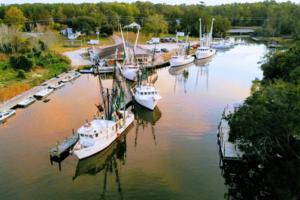
A ban nearly crushed NC shrimpers. Why they embrace the life they fight to keep.
RALEIGH, N.C. — All was still on the New River near the Davis Seafood fish house. But when 83-year-old William “Buddy” Davis walked out of his home and pulled on tall rubber boots, it signaled the work was about to begin.
Not far from tourist-filled beaches of Topsail Island, the Davis family began preparing for the homecoming of the 58-...Read more

Dennis Anderson: Parasites, snails, ducks and government make for itchy battle on Minnesota lake
MINNEAPOLIS — Bill Ness watched two weeks ago as his 5-year-old daughter walked into Pelican Lake in Otter Tail county wearing a full wet suit, with booties.
In less than 10 minutes, the girl’s hands were covered with welts.
The problem: swimmer’s itch.
But not your typical swimmer’s itch, Ness said.
“Comparing what we have to ...Read more

Facing terminal diagnosis, Colorado fisherman Chad LaChance leaves legacy of outdoor education
DENVER — Forget the cartoons. All little John Succarde wanted to do on Saturday mornings was watch Chad LaChance.
LaChance’s TV show, “Fishful Thinker,” became a staple for Colorado outdoor enthusiasts after it debuted in 2009. The educational fishing show endeared the Evergreen High School and Colorado State alum to anglers of all ages...Read more
Best times for anglers
(Table for July 27-Aug. 10)
This table lists top fishing times and days for the coming weeks. For best results, begin fishing one hour before and continue one hour after the times given. Times apply to all time zones.
———
Sunday………...........2:25 p.m.........………....................................................2:50 a.m.
...Read more

Dennis Anderson: Whacking a century-old federal bird-banding program would be wacky
MINNEAPOLIS — Whose ox is getting gored by federal budget cuts is a hot topic these days, and compared with people who will lose their health insurance or jobs, duck hunters are in pretty good shape.
Mallards and other ducks likely will be fewer this fall than in recent years due to drought on U.S. and Canadian prairies. But a hunting season ...Read more
Best times for anglers
(Table for July 20-Aug. 3)
This table lists top fishing times and days for the coming weeks. For best results, begin fishing one hour before and continue one hour after the times given. Times apply to all time zones.
———
Sunday………..........7:45 a.m.....…………………................................................8:20 p.m. ...Read more
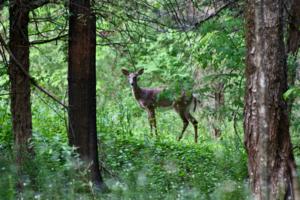
A fatal white-tailed deer disease has been detected near the Allegheny County border in Pa.
PITTSBURGH — First detected in Pennsylvania 13 years ago, a fatal, contagious disease affecting deer and elk has yet to be confirmed in Allegheny County. That could change, and soon, as chronic wasting disease continues to spread across the state and was recently detected in an animal in Armstrong County's Freeport — near the Allegheny ...Read more
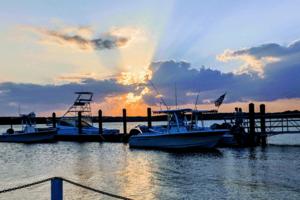
Fighting with sharks, anglers battle the apex predator for mackerel, cobia. Who's winning?
HILTON HEAD ISLAND, S.C. — Captain Marc Pincus doesn’t think sharks get enough credit.
“They are smart,” Pincus said. “They adapt.”
The owner of Reelin Charters spends his days taking tourists out shark fishing on the waters around Hilton Head Island, where the currents, water temperatures, bait and other factors add up to an area ...Read more
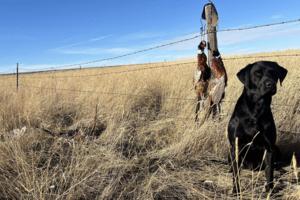
Dennis Anderson: Pheasant chicks drowned in Minnesota floods, but hope still springs for this year's hunt
MINNEAPOLIS — Department of Natural Resources roadside counts for August 1980 reported about 105 pheasants spotted per 100 miles driven on long-established southern Minnesota routes. The next year the number jumped to almost 134.
Compared to the five previous years, those were good tallies for Minnesota pheasants. In 1975, only 35 pheasants ...Read more
Popular Stories
- King salmon's disappearance has changed Alaska's Kenai River, but a soaring sockeye run is keeping it in business
- Minnesota deer farmers lose for the second time in their attempt to nullify new regulations
- Unsafe toxins halt Florida's popular Pasco scallop season for 2nd year in a row
- Best times for anglers
- Dennis Anderson: Setting expectations and praising efforts, he trained his dogs -- and raised his sons





